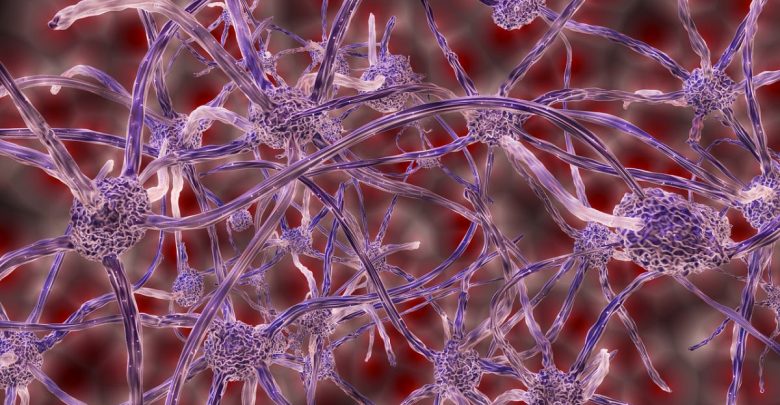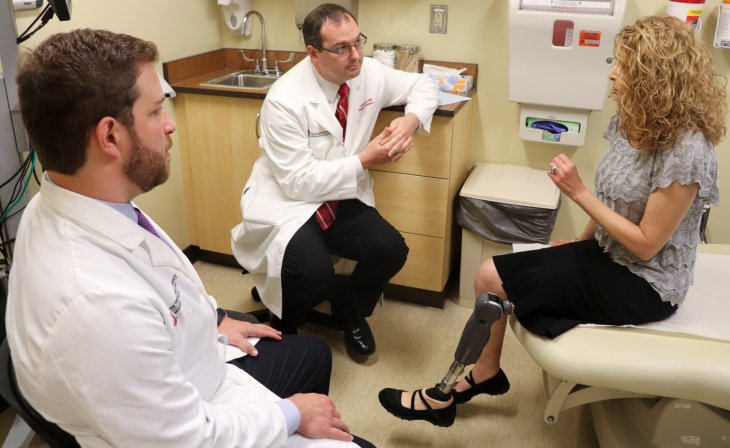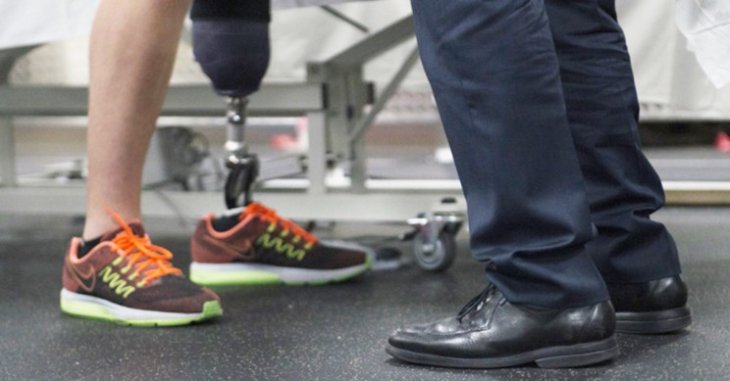Rerouting Nerves To Reduce Amputees' Phantom Limb Syndrome
Anita - Jan 03, 2019

Rerouting the disorganized nerves which are caused by an amputation into the surrounding muscles has ability to reduce pain significantly.
Doctors from the College of Medicine and Medical Center at the Ohio State University Wexner have developed a new treatment method which aims to relieve the amputees’ stump pain and phantom limb. They use the TMR (targeted muscle reinnervation) in this method to make the pain of those who have an arm or leg cut off disappear.
It is reported that the U.S currently has up to 75% of amputees suffering from the stump pain and phantom limb. In the new method nerves cut during amputating surgery are rerouted into surrounding muscle.
Targeted surgery results in pain decrease and provides prosthetics assistance
Doctor Ian Valerio, Burn, Wound, and Trauma’s Division Chief from the Plastic and Reconstructive Surgery Department in Ohio, in coordination with Doctor J. Byers Bowen, a former resident running his own practice now has released their latest work which was featured in the January 2019 issue of Plastic and Reconstructive Surgery. Their work describes how to use TMR method in surgery of cutting off below-the-knee parts.
The TMR method was first developed to allow amputees to control limb prosthetics better. Doctors typically perform the surgery months or even years after the first amputation.
The surgeons then found out that the procedure also generated significant improvement in experiences of pain. They started using the procedure to treat phantom limb pain and/or symptomatic neuromas, also known as treat disorganized nerve endings. In the paper, 18 primary and 4 secondary surgeries using TMR on below-the-knee amputees were detailed.

Disorganized nerve endings can result in continuous distress
As a result, there were no patients developing symptomatic neuromas. Plus, only 13% of patients with primary TMR treatment had pain after six months.
According to Valerio, amputees have much pain due to tanged nerve endings like symptomatic neuromas inside the residual limb. The pain appears when nerves are broken and not dealt, resulting in the fact that they have no place to go.


Patients who used to treat by TMR could also partly reduce or completely stop using pain-related medications.
According to Valerio’s explanation, TMR supports the reduction in multiple pain types and pain scores which has been illustrated via various pain surveys. With the discovery of these facts, surgeons can reduce the pain in cut limbs and others pains directly.
Furthermore, amputees are able to use and take control of their prosthetics better besides the improved pain outcomes.
More single muscle unit firings are allowed through the thoughts of patients thanks to TMR. It offers the better ability of intuitive control, which leads to:

The sooner the surgery is performed, the better life quality improves

In various different cases, the surgery is able to take place at the amputation time. And the scientists believed that it is reliable to use TMR method for the surgery to relieve the amputees’ pain. Amputees have more opportunities to control their upper limb alternatives.
The surgery is performed by doctors in months or even years from the first amputation. As soon as the procedure was discovered by the surgeons to improve particular pain causes, it was used in tangled nerve endings (considered as the phantom pain in limb and/or symptomatic neuromas) treatment.
Featured Stories

Features - Jul 01, 2025
What Are The Fastest Passenger Vehicles Ever Created?

Features - Jun 25, 2025
Japan Hydrogen Breakthrough: Scientists Crack the Clean Energy Code with...

ICT News - Jun 25, 2025
AI Intimidation Tactics: CEOs Turn Flawed Technology Into Employee Fear Machine

Review - Jun 25, 2025
Windows 11 Problems: Is Microsoft's "Best" OS Actually Getting Worse?

Features - Jun 22, 2025
Telegram Founder Pavel Durov Plans to Split $14 Billion Fortune Among 106 Children

ICT News - Jun 22, 2025
Neuralink Telepathy Chip Enables Quadriplegic Rob Greiner to Control Games with...

Features - Jun 21, 2025
This Over $100 Bottle Has Nothing But Fresh Air Inside

Features - Jun 18, 2025
Best Mobile VPN Apps for Gaming 2025: Complete Guide

Features - Jun 18, 2025
A Math Formula Tells Us How Long Everything Will Live

Features - Jun 16, 2025
Comments
Sort by Newest | Popular